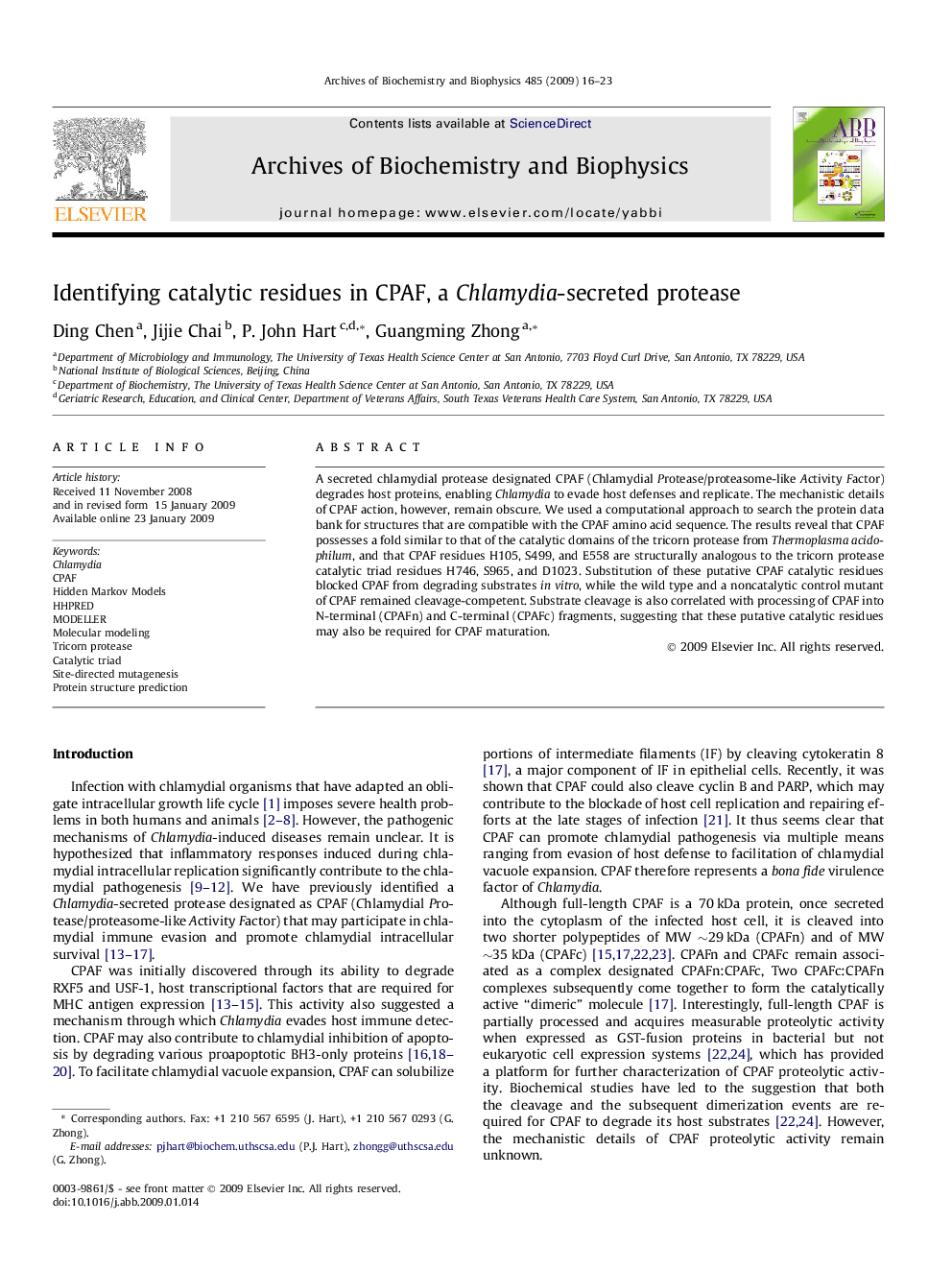| کد مقاله | کد نشریه | سال انتشار | مقاله انگلیسی | نسخه تمام متن |
|---|---|---|---|---|
| 1926337 | 1536457 | 2009 | 8 صفحه PDF | دانلود رایگان |

A secreted chlamydial protease designated CPAF (Chlamydial Protease/proteasome-like Activity Factor) degrades host proteins, enabling Chlamydia to evade host defenses and replicate. The mechanistic details of CPAF action, however, remain obscure. We used a computational approach to search the protein data bank for structures that are compatible with the CPAF amino acid sequence. The results reveal that CPAF possesses a fold similar to that of the catalytic domains of the tricorn protease from Thermoplasma acidophilum, and that CPAF residues H105, S499, and E558 are structurally analogous to the tricorn protease catalytic triad residues H746, S965, and D1023. Substitution of these putative CPAF catalytic residues blocked CPAF from degrading substrates in vitro, while the wild type and a noncatalytic control mutant of CPAF remained cleavage-competent. Substrate cleavage is also correlated with processing of CPAF into N-terminal (CPAFn) and C-terminal (CPAFc) fragments, suggesting that these putative catalytic residues may also be required for CPAF maturation.
Journal: Archives of Biochemistry and Biophysics - Volume 485, Issue 1, 1 May 2009, Pages 16–23